This is an image of the Earth's moon, along with Saturn's icy moons for comparison.
Click on image for full size
Image from: NASA
A Comparison of Saturn's Icy Moons, and the Earth's Moon
This is an image of the Earth's moon, shown in the lower left, with the six much smaller icy moons of Saturn.
The moons in order, starting from the top left are: Mimas, Enceladus, Tethys, Dione, Rhea, and Iapetus.
You might also be interested in:
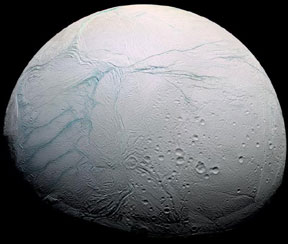
Enceladus is the sixth largest moon of Saturn. It was discovered in 1789 by the British astronomer William Herschel (who also discovered the planet Uranus). Enceladus is a medium-sized moon made primarily
...more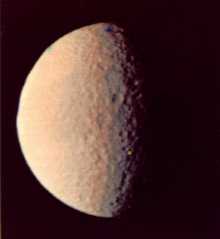
Tethys was discovered by G. Cassini in 1684. Tethys is the 8th closest moon to Saturn, with a standoff distance of 294,660 km. It is one of the icy moons, similar to the Galilean satellites. Tethys is
...more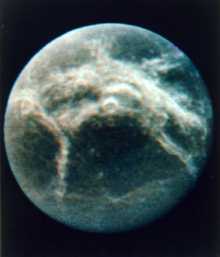
Dione was discovered by G. Cassini in 1684. Dione is the 7th farthest moon from Saturn, with a standoff distance of 377,400 km. It is a small icy moon, lightly cratered, with wispy white streaks across
...more
Rhea was discovered by G. Cassini in 1672. Rhea is the 5th farthest moon from Saturn, with a standoff distance of 527,040 km. It is one of the icy moons, similar to the Galilean satellites. Rhea is about
...more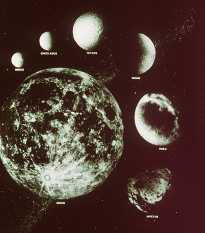
This is an image of the Earth's moon, shown in the lower left, with the six much smaller icy moons of Saturn. The moons in order, starting from the top left are: Mimas, Enceladus, Tethys, Dione, Rhea,
...more
The surface of Dione does not have many craters, which is an indication of changes to the surface in the past. Instead it has wispy white streaks similar to those found on Rhea extending for many kilometers
...more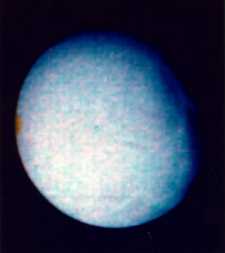
The surface of Enceladus does not have many craters. Instead it has grooves similar to those found on Ganymede. These grooves extend for many kilometers over the surface. The presence of grooves indicates
...more
Helene was discovered on February 29, 1980, by Pierre Laques and Raymond Despiau of the Pic du Midi Observatory, France, and J. Lecacheux from the Meudon Observatory, France. Their discovery was made using
...more













